Natural disasters can have a profound effect on climate change AND the gradual climate change can have an impact on natural disasters. It is essentially a positive feedback loop. The gradual increase in global temperature can, and quite possibly will, lead to an increase in:
- Earthquakes
- Volcanic Activity
- Avalanches
- Tsunamis
- Floods and Mud Flows
- Torrential Rain leading to Massive Erosion
- Movement of the Tectonic Plates
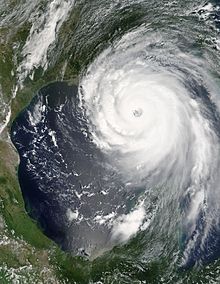
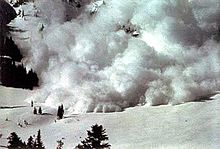
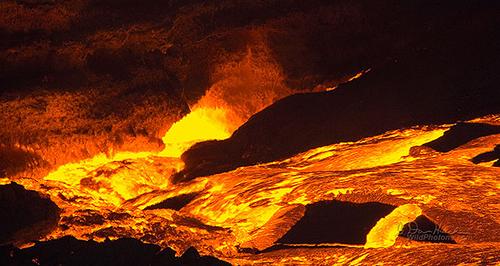
Maarten K. van Aalst, a Dutch climatologist wrote a fairly good article that relates the El Niño events to the change in global climate. He stated that climate change due to increased carbon dioxide in the atmosphere will bring with it intense droughts and floods leading to decreased agricultural and rangeland productivity in drought- and flood-prone regions, as well as decreased hydro-power potential in drought-prone regions. He also said that there is evidence that the increase in carbon dioxide in the atmosphere has lead to a more frequent El Niño. This is obviously not good because you don't want extreme flooding or extreme droughts; you want a somewhat consistent climate so you can sustain agriculture. (El Niño events typically drench western South America but cause massive droughts in Indonesia, whereas the La Niña events cause flooding in Australia and Southeast Asia, but leave South America in a drought). The massive flooding of a region can cause a fairly distinct change in a population or in an entire ecosystem. Extreme weather patterns can even destroy entire species. The increase in these El Niño/La Niña events could be a major player in global climate change over the next few decades.
An increase in global temperature not only will affect the atmosphere but also the geology of the Earth itself. As glaciers melt, avalanches, floods, and increases in mud flow will become ever more common, especially in mountainous regions such as the Alps and Rockies. The resulting underwater landslides could lead to tsunamis. The increase volume of liquid water on the planet's crust will cause pressure changes that could potentially set off numerous volcanoes around the globe. This has been proven by the correlation between ice sheet mass and number of volcanic eruptions (Watts, 2012) There will also be a significant increase in the amount of methane gas present in the atmosphere as a result of ice melting in permafrost regions such as Siberia and northern Canada. The methane is stored in the rock but will be released as the ice melts and draws the gas to the surface. Another source of methane gas is the gas present on the ocean floor in methane hydrates; this is likely to increase in volume in the atmosphere due to underwater landslides caused by rising sea levels. The increase in methane gas will accelerate the global warming that is already present.
Specific Examples of Natural Disasters and Climate Change
To connect climate change with current events, there have been a lot of publications recently about Hurricane Sandy and the effect that climate change will have on all natural disasters, especially future hurricanes:
Sandy was a hybrid storm – a winter storm and a hurricane combination. Climate scientists do not currently understand how these hybrid storms will respond to climate change and global warming – but it is important that they figure it out quickly.
Current data and models indicate that a once-in-100-year hurricane would bring a 5.3 foot storm tide to the Battery, a 500-year hurricane would bring a 10.2 foot storm tide to the Battery. The storm tide that was caused by Sandy is that of a 1,000-year hurricane according to weather models.
Four climate models were used to compare the effects of simulated storms at the end of the 20th century with those conditions projected for the end of this century. The study found that two leading factors contributing to the increase in surge flooding is rising sea level and changes in hurricanes. Melting ice and the expansion of seawater as it warms is gradually increasing sea levels. Higher sea levels mean higher storm tides. The models predict a rise of 3.3 feet by the end of the century. When both sea level and the future of severe storms are taken into account, the models project much more frequent extreme surge flooding in the New York City area.
Since the storm hit an area typically not affected by hurricanes, it brought some much needed attention to why this storm occurred and how environmental issues could lead to more horrifying disasters.
Model of the perfect set-up for a Hybrid Storm
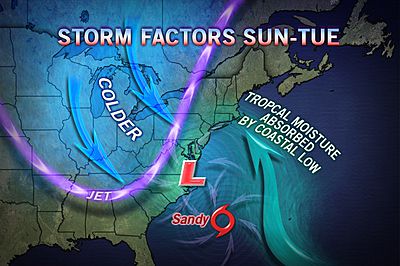
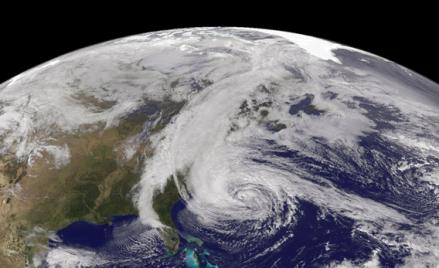
Here is some more information about Hybrid Storms
The Effects of "Man-Made" Disasters
- Fukushima Nuclear Accident (albeit not a natural disaster, but a disaster)
The biological impacts of the Fukushima nuclear accident on the Pale Grass Blue Butterfly explored the effects of natural disasters on evolution and climate change. The butterfly was chosen because of its ability to be a great environmental indicator. The butterfly has impressive wing color patterns that are very sensitive to environmental changes. Due to the massive release of radioactive materials to the environment after the collapse of the power plant, many physiological and genetic damage has been observed in the offspring of the Z. Maha butterfly. The results of the study were impressive. The study found that the abnormal traits observed in the F1 generation were inherited by the F2 generation and that is highly probably that these characteristics were caused by genetic damage introduce to the parent cells due to the Fukushima accident. At this time, the Z. Maha population is not responding well to the radiation. The population in the Fukushima area is deteriorating physiologically and genetically at a rapid pace. One of the greatest concerns is that the population is not adapting fast enough to the environmental changes.
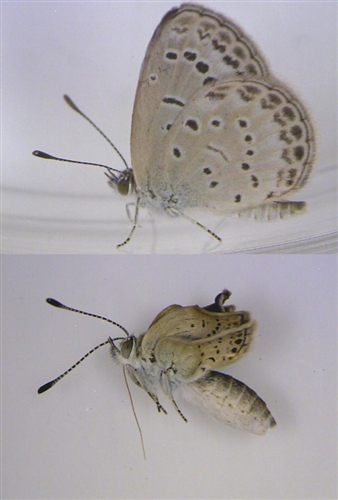
- BP oil spill and the long lasting consequences on Marine Life in the Gulf of Mexico
- Killifish, a small fish often used for bait that are usually plentiful in marshy areas of the Gulf, are suffering illnesses as a result of the toxic chemicals found in the water
- Insect like ants and crickets are disappearing from the wetlands due to the petrochemicals found in the soil and the water.
- At the bottom of the food chain, zooplankton are contaminated still by traces of oil.
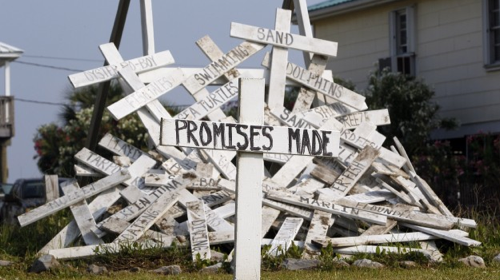 |
| Click for full-size image |
To read more about these issues regarding the oil spill, check out:
Two Years After BP Oil Spill, Marine Life in the Gulf of Mexico Still Reels or
BP Will Plead Guilty and Pay Over $4 Billion
Natural Disasters and the Economy
We also looked at how natural disasters can hurt the economy on the Economic Effects page. This page links to an article in Rolling Stone Magazine about how due to increases in temperature and salinity, Australia has been experiencing more extreme weather and natural disasters Despite the fact that natural disasters cause immense damage, countries are still worried about the costs of implementing changes to combat thermal warming. Everyone seems to have the attitude that we should save money and let others worry when extreme effects from thermal warming occur later.
Comments
fawcette
Nov 27, 2012
Here's a parody about the BP oil spill: http://www.youtube.com/watch?v=2AAa0gd7ClM ...It might be unsuitable for younger audiences...I'm in the library and can't watch it to review it right now, so I didn't want to put it on the actual wiki.